第40章 MONEY OR SIMPLE CIRCULATION(21)
At a time when hides and furs served as money in that country,the contradiction between the perishable and unwieldy material and its function as a medium of circulation led to the custom of substituting small pieces of stamped leather for it;these pieces thus became money orders payable in hides and furs.Later they were called kopeks and became mere tokens representing fractions of the silver ruble and as such were used here and there until 1700,when Peter the Great ordered their replacement by small copper coins issued by the State.[4]In antiquity writers,who were able to observe only the phenomena of metallic currency,among tllem Plato [5]and Aristotle [6]already understood that gold coin is a symbol or token of value.Paper money with a legal rate of exchange arises early in countries such as China,which have not evolved a credit system.[7]Later advocates of paper money also refer expressly to the transformation of the metal coin into a token of value which is brought about by the circulation process itself.Such references occur in the works of Benjamin Franklin [8]and Bishop Berkeley.[9]
How many reams of paper cut into fragments can circulate as money?In this form the question is absurd.Worthless tokens become tokens of value only when they represent gold within the process of circulation,and they can represent it only to the amount of gold which would circulate as coin,an amount which depends on the value of gold if the exchange-value of the commodities and the velocity of their metamorphoses are given.The number of pieces of paper with a denomination of £5which could be used in circulation would be one-fifth of the number of pieces of paper with a denomination of £1,and if all payments were to be transacted in shilling notes,then twenty times more shilling notes than pound notes would have to circulate.If gold coin were represented by notes of different denomination,e.g.,£5notes,£1notes and 10s.notes,the number of the different types of tokens of value needed would not just be determined by the quantity of gold required in the sphere of circulation as a whole,but by the quantity needed in the sphere of circulation of each particular type of note.If £14million were the level below which the circulation of a country never fell (this is the presupposition of English Banking legislation,not however with regard to coin but to credit money),then 14million pieces of paper,each a token of value representing £1,could circulate.If the value of gold decreased or increased because the labour-time required for its production had fallen or risen then the number of pound notes in circulation would increase or decrease in inverse ratio to the change in the value of gold,provided the exchange-value of the same mass of commodities remained unchanged.
Supposing gold were superseded by silver as the standard of value and the relative value of silver to gold were 1:15,then 210million pound notes would have to circulate henceforth instead of 14million,if from now on each piece of paper was to represent the same amount of silver as it had previously represented of gold.The number of pieces of paper is thus determined by the quantity of gold currency which they represent in circulation,and as they are tokens of value only in so far as they take the place of gold currency,their value is simply determined by their quantity .Whereas,therefore,the quantity of gold in circulation depends on the prices of commodities,the value of the paper in circulation,on the other hand,depends solely on its own quantity.
The intervention of the State which issues paper money with a legal rate of exchange --and we speak only of this type of paper money --seems to invalidate the economic law.The State,whose mint price merely provided a definite weight of gold with a name and whose mint merely imprinted its stamp on gold,seems now to transform paper into gold by the magic of its imprint.Because the pieces of paper have a legal rate of exchange,it is impossible to prevent the State from thrusting any arbitrarily chosen number of them into circulation and to imprint them at will with any monetary denomination such as £1,£5,or £20.Once the notes are in circulation it is impossible to drive them out,for the frontiers of the country limit their movement,on the one hand,and on the other hand they lose all value,both use-value and exchange-value,outside the sphere of circulation.Apart from their function they are useless scraps of paper.
But this power of the State is mere illusion.It may throw any number of paper notes of any denomination into circulation but its control ceases with this mechanical act.As soon as the token of value or paper money enters the sphere of circulation it is subject to the inherent laws of this sphere.